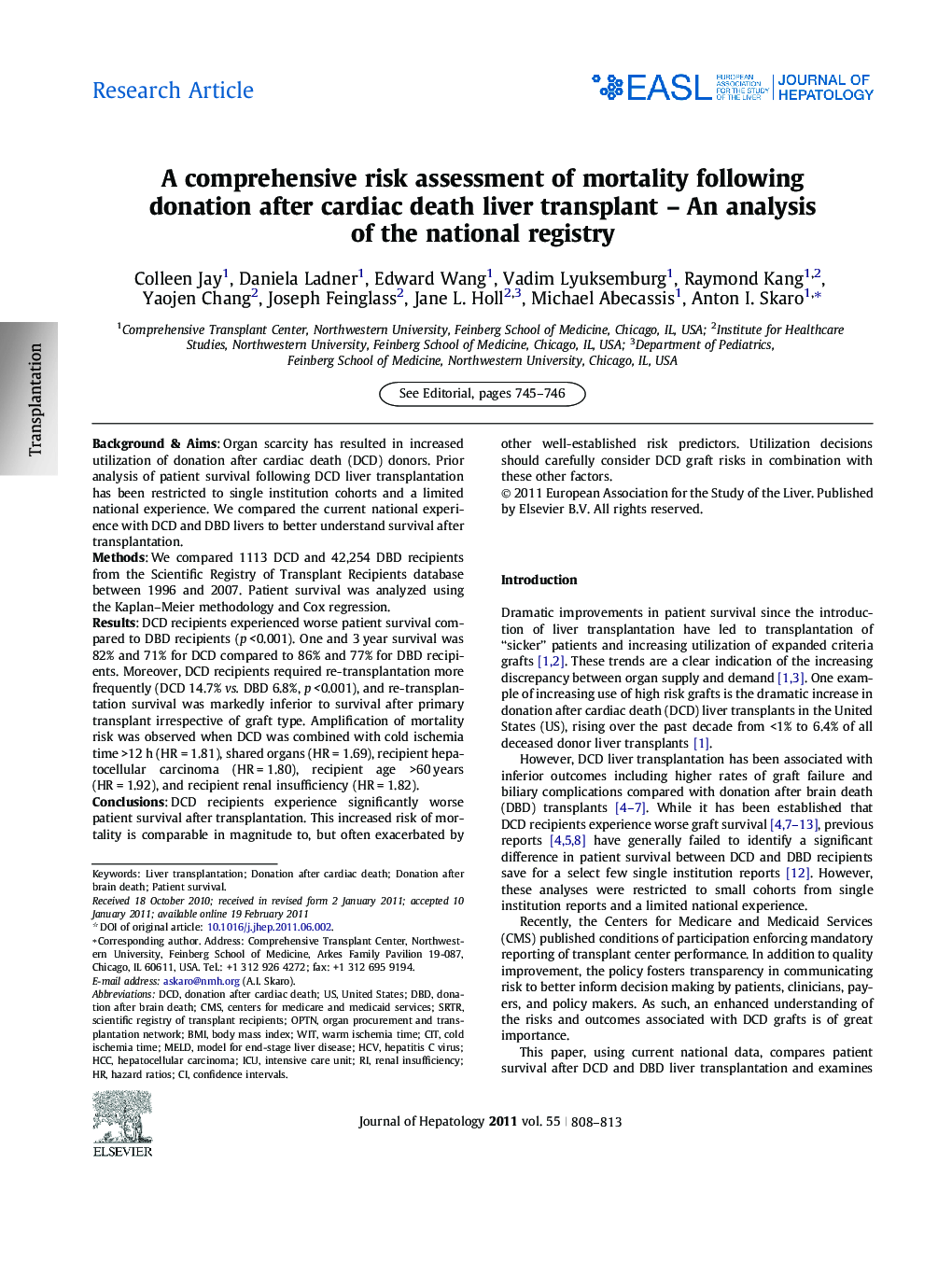| Article ID | Journal | Published Year | Pages | File Type |
|---|---|---|---|---|
| 6107866 | Journal of Hepatology | 2011 | 6 Pages |
Background & AimsOrgan scarcity has resulted in increased utilization of donation after cardiac death (DCD) donors. Prior analysis of patient survival following DCD liver transplantation has been restricted to single institution cohorts and a limited national experience. We compared the current national experience with DCD and DBD livers to better understand survival after transplantation.MethodsWe compared 1113 DCD and 42,254 DBD recipients from the Scientific Registry of Transplant Recipients database between 1996 and 2007. Patient survival was analyzed using the Kaplan-Meier methodology and Cox regression.ResultsDCD recipients experienced worse patient survival compared to DBD recipients (p <0.001). One and 3 year survival was 82% and 71% for DCD compared to 86% and 77% for DBD recipients. Moreover, DCD recipients required re-transplantation more frequently (DCD 14.7% vs. DBD 6.8%, p <0.001), and re-transplantation survival was markedly inferior to survival after primary transplant irrespective of graft type. Amplification of mortality risk was observed when DCD was combined with cold ischemia time >12 h (HR = 1.81), shared organs (HR = 1.69), recipient hepatocellular carcinoma (HR = 1.80), recipient age >60 years (HR = 1.92), and recipient renal insufficiency (HR = 1.82).ConclusionsDCD recipients experience significantly worse patient survival after transplantation. This increased risk of mortality is comparable in magnitude to, but often exacerbated by other well-established risk predictors. Utilization decisions should carefully consider DCD graft risks in combination with these other factors.
